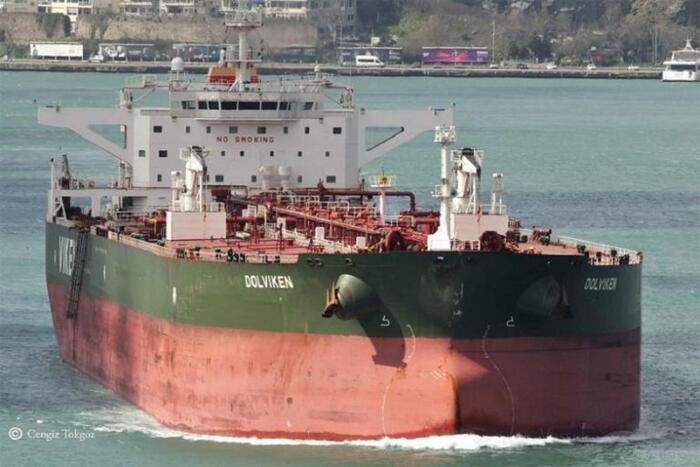The Suez Canal traffic jam in numbers 1:04
(CNN) -
Since it was completed in 1869, the Suez Canal has been one of the most important waterways in the world;
a portal between East and West that has been controlled by several countries, whose use threatened to start a war and which became the basis of the global economy.
But the gigantic container ship that has run aground on the other side of the waterway poses a very modern problem: About a tenth of world trade passes through the Suez Canal and could be facing a week-long blockade.
What will happen in the Suez Canal?
1:16
Workers continue to clear sand and mud from the Ever Given, a 224,000-ton ship that ran aground after 40-knot winds and a sandstorm that caused poor visibility and poor navigation ran aground.
The speed with which they can move the ship, which is as long as the Empire State Building is tall, is of worldwide importance, and is a unique challenge even in Suez's eventful history.
Why is the Suez Canal so important?
The importance of the canal is due above all to its location: it is the only place that directly connects the waters of Europe with the Arabian Sea, the Indian Ocean and the countries of Asia-Pacific.
Without Suez, shipments traveling between these parts of the world would have to traverse the entire African continent, increasing costs and substantially lengthening travel times.
advertising
A solution to that problem seemed elusive for centuries, until the valuable 120-mile (193 km) waterway was built to pass through Egypt to the Red Sea.
It was built over the course of a decade in the mid-19th century, a feat that is only possible because the Mediterranean and the Red Sea were determined to be roughly at the same level in altitude.
A freighter navigates the Suez Canal, passing the port authority building in Port Said, in 2008. About 19,000 vessels pass through the canal each year.
The time the channel saves is almost invaluable.
Today, a ship traveling from a port in Italy to India, for example, would cover about 4,400 nautical miles if it passed through the Suez Canal, a journey that, at a speed of 20 knots, would take about nine days.
But the second fastest way to complete that same journey would be through the Cape of Good Hope and around Africa.
At the same speed, it would take three weeks to travel the route, which is 10,500 nautical miles long.
Added to its importance is that there are no alternatives to Suez;
If it weren't for the Red Sea that stretches over the Horn of Africa and across Sudan and Egypt, no landmass would be narrow enough to support an artificial waterway than a Europe with Asia-Pacific.
The canal's strategically important position means that about 19,000 vessels pass through it each year, according to Lloyd's List, a shipping industry magazine.
1 of 8
|
A 224,000-ton Panamanian-flagged vessel was trapped in the Suez Canal, blocking one of the busiest waterways in the world.
(Credit: Suez Canal Authority / HO / AFP via Getty Images)
2 of 8
|
The Ever Given, a container ship almost as long as the Empire State Building, ran aground on March 23 after being caught in 40-knot winds and a sandstorm that caused poor visibility and poor navigation, the Suez Canal Authority said. (SCA).
The first attempts to free the ship were unsuccessful.
(Credit: Suez Canal Authority / HO / AFP via Getty Images)
3 of 8
|
The Ever Given is 400 meters long and 59 meters wide.
Stranded, it blocks traffic in both directions through the key shipping channel.
This photo shows Lieutenant General Ossama Rabei, head of the Suez Canal Authority, at the scene.
(Credit: Suez Canal Authority / HO / AFP via Getty Images)
4 of 8
|
Dozens of vessels are stagnant and have not been able to cross the Suez Canal due to the moored ship.
This image from March 25, 2021 shows ships that had entered from the Gulf of Suez side and were waiting at the Great Bitter Lake in Egypt.
(Credit: Cnes 2021, Distribution Airbus)
5 of 8
|
Dozens of vessels, including other large container ships, tankers carrying oil and gas, and bulk vessels carrying grain, have jammed at both ends of the canal to create one of the worst transportation jams seen in years.
(Credit: Cnes 2021, Distribution Airbus DS. LOCATION)
6 of 8
|
Approximately 30% of the world's shipping container volume transits the 193-kilometer Suez Canal daily and approximately 12% of total global trade for all merchandise.
(Credit: Cnes 2021, Distribution Airbus DS. LOCATION)
7 of 8
|
Moving the ship and unblocking the track could take "days or weeks," said Peter Berdowski, chief executive of Boskalis, whose sister company SMIT salvage is now working to free the ship.
(Credit: Cnes 2021, Distribution Airbus DS. LOCATION)
8 of 8
|
A Suez Canal official told CNN that re-floating the huge ship is "technically very complicated" and could take days.
(Credit: Suez Canal Authority / HO / AFP via Getty Images)
What is its history?
States had been yearning for a passage connecting the Mediterranean and the Red Sea for centuries, and the importance of the canal was clear long before construction began.
Driven by French interests and exploration, the Suez Canal was built over the course of 10 years by local peasants recruited and forced to work, and European laborers who later joined the effort.
Financial problems forced the Ottoman governor of Egypt to sell a majority stake in the waterway to Great Britain in 1875;
13 years later, a multinational summit resulted in an agreement that the channel would be free to use for all countries, both in peace and in war.
Its positioning made it a high point in the two main conflicts of the 20th century;
in World War I, Turkish forces attempted to attack the canal from the east, and in World War II, the Nazis' Afrika Korps sought to do the same from the west.
But the canal remained under British control until Egyptian President Gamal Abdel Nasser nationalized it in 1956, sparking the Suez crisis that prompted invasion threats from Israel, France, and Britain.
The episode threatened to provoke a war, until pressure from the United States and diplomatic efforts from the nascent United Nations forced a solution.
The Suez Canal has been closed before: for eight years starting in 1967 it became a border between a warring Egypt and Israel, a conflict that left more than a dozen ships, known as the Yellow Fleet, trapped in the channel during all that time.
Egypt suspends traffic on Suez Canal due to traffic jam 3:32
What happens now?
Dislodging the Ever Given, which currently blocks the waterway, could take "days or weeks, depending on what is found," according to the chief executive of Boskalis, whose sister company SMIT Salvage is now working to free the ship.
Peter Berdowski told Dutch television late Wednesday that his company had already determined that it would be impossible to release the ship as it currently stands.
"The ship with the weight that it has now is impossible to pull," he said.
"You can forget about that."
That spells trouble for world trade.
Leading ocean freight insurer Allianz has said that ships "face long and costly diversions if the canal is not opened soon."
Diverting ships through the southern tip of Africa would add about two weeks to their travels.
Ships unable to cross the Suez Canal wait at Great Bitter Lake on March 25.
Nonetheless, several ships are already choosing to deviate from the blocked channel, reports maritime traffic monitoring websites and shipping data intelligence companies.
Even before the Ever Given ran aground in the Suez Canal earlier this week, global supply chains were at a limit point of operation, making it much more expensive to transport goods around the world and causing shortages of everything. from stationary bikes to cheese at a time of unprecedented demand.
More than 80% of global trade by volume moves by sea, and disruptions are adding billions of dollars to supply chain costs.
Globally, the average cost to ship a 40-foot (12-meter) container soared from $ 1,040 last June to $ 4,570 on March 1, according to S&P Global Platts.
It is unclear if the canal lockdown will affect consumers and how severely.
But Commerzbank analysts said in a note to clients on Friday that the incident could make oil more expensive for consumers due to higher tariffs from tankers as a result of the lockdown.
The economic importance of the Suez Canal 0:57
CNN's Hanna Ziady and Julia Horowitz contributed to this report.
Suez Canal







/cloudfront-eu-central-1.images.arcpublishing.com/prisa/SRAR3WBTGFDZJM33FJUS7EYCT4.jpg)

